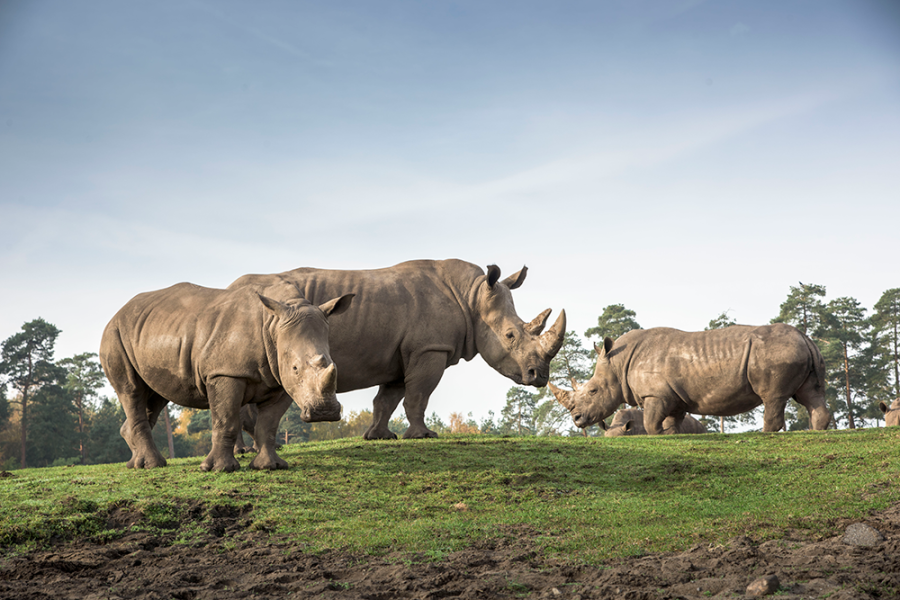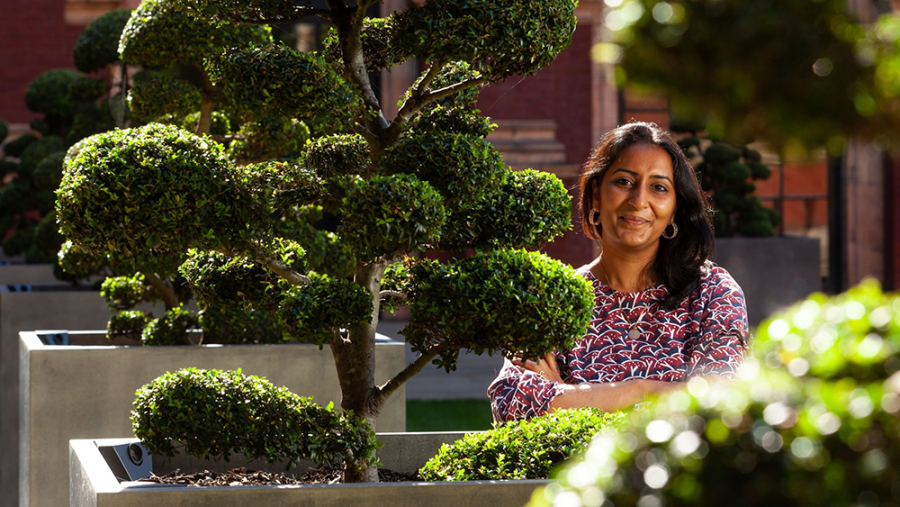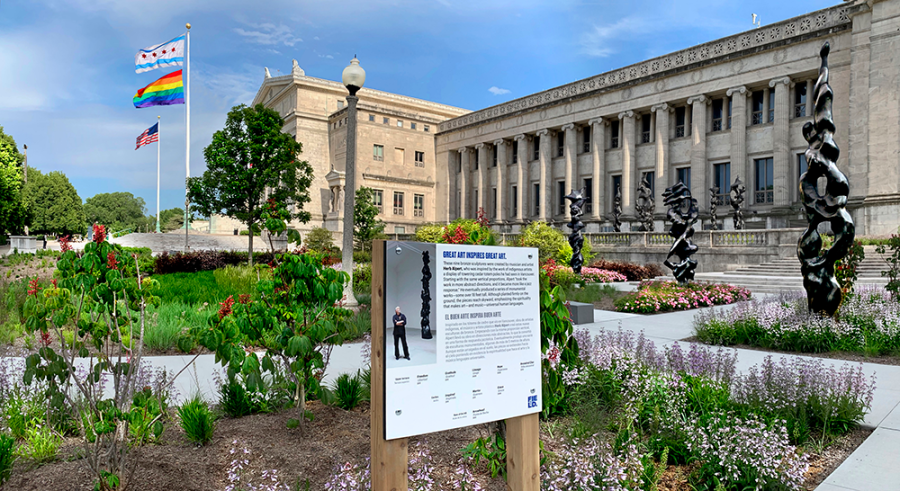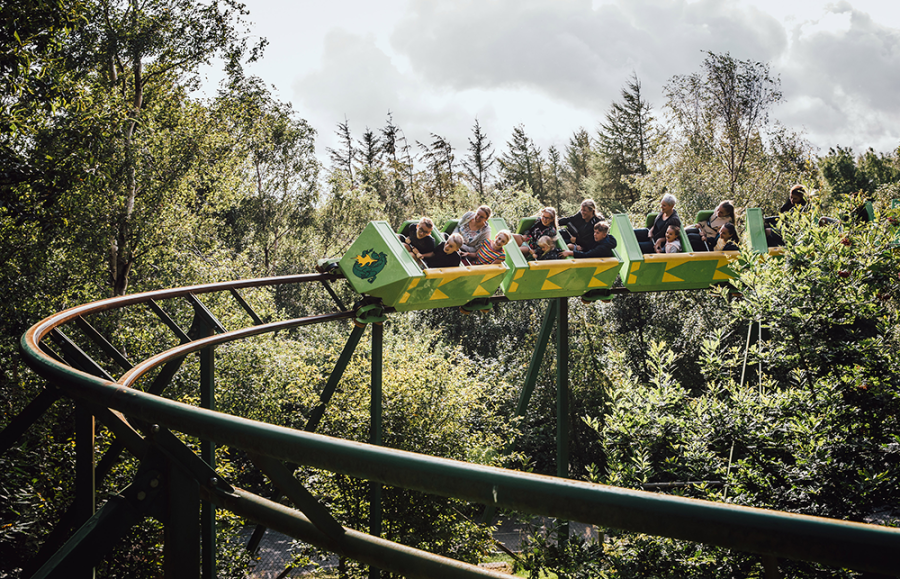Stepping Up on Sustainability

In the wake of the 2021 United Nations (U.N.) Climate Change Conference and the pandemic, the attractions industry has a once-in-a-lifetime opportunity to create positive sustainable change. Facilities are already adapting how they operate, innovate, and invest—inspiring people and developing resilience. Their actions are helping our world, well-being, and economy.
A sustainability mindset comes naturally to Dr. Fabrizio Sepe, CEO of Serengeti Park, which combines a safari park, an amusement park, and a resort in Hodenhagen, Germany. Sepe carefully considers the environmental impact of developments.
“For example, we built our lodgings with sustainable and local materials so that CO2 (carbon dioxide) emissions wouldn’t be so high,” he explains. Serengeti Park has 280 bungalows with almost 1,000 beds. The accommodations are certified as eco-friendly.
When Sepe introduced the “Black Mamba” jet boat ride, he specified boats with gas-power instead of petrol engines. This year, Sepe will convert his Florida Airboats to run on gas.
But his biggest challenge will come in 2022. Sepe had budgeted 1 million euros for a third restaurant for overnight guests, but the costs shot up to 2.5 million euros due to the pandemic. “In my shower, I had this crazy idea, ‘Why don’t we buy an airplane and transform it into a restaurant?’” he says.
Sepe successfully bid at auction for an Airbus A310, decommissioned by the German Air Force. Dismantling and transporting it will be a huge task, but one that he feels will be worth it.
“It’s going to be mind-blowing PR,” Sepe says. The plane will become the Cockpit Safari Restaurant, seating 140-150 diners. Couples can enjoy candlelit dinners in the cabin, and a kitchen beneath the aircraft will send food upstairs. Sepe aims to welcome diners in June or July.
“You can only recycle 50% of an airplane. So by transforming it into a beautiful restaurant, we are having a positive ecological impact,” Sepe says. The project epitomizes his belief that “sustainability has to be fun.”
In addition to new 2022 attractions, including the airplane restaurant, a “Godzimba” roller coaster, a tower ride, and a gorilla enclosure, Sepe is investing in renewable energy. A car park opening in 2023 will have a solar carport. “We are also putting in a windmill energy plant,” Sepe says.
He believes attractions must have a clear vision of what they want to accomplish, draw up a master plan, break it down into steps, and tackle them: “For me, it’s what do I want for the next generation?” Sepe recommends sustainability briefings for staff. “People have to believe in it to get behind it,” he says.

(Photo Credit: Sara Kassam)
Defining a Multiyear Sustainability Plan
The Victoria and Albert Museum (V&A) in London recently launched its Sustainability Plan 2021-2024, which builds on existing work.
“We chose three areas of focus to frame our action: Place, People, and Program,” says Sara Kassam, sustainability lead at the V&A. “Within each area, we selected actions that would have the most impact and then assigned responsibilities and targets,” Kassam says.
For example, on Place, the V&A is targeting net zero by 2035 for emissions classified as Scope 1 (direct greenhouse gas [GHG] emissions that occur from sources controlled or owned by an organization), Scope 2 (indirect GHG emissions associated with the purchase of electricity, steam, heat, or cooling), and Scope 3 (all other indirect emissions that occur in an organization’s value chain). Steps toward this include monitoring and reducing emissions; developing a low-carbon travel policy covering business travel, object transport, and commuting; and replacing bulbs with energy-efficient LED lighting. The V&A incorporates operational building performance targets into construction projects.
“How we procure goods and services has a huge impact, and we’re working with suppliers on this,” Kassam says. The museum reuses resources, internally in exhibitions and externally by donating unwanted items.
Kassam praises the “wonderful Sustainability Coordinators Network,” staff volunteers who use their enthusiasm, creativity, and expertise to embed sustainable practices across the V&A. The museum also has a staff learning and development program, covering topics from U.N. Sustainable Development Goals and biodiversity to carbon literacy and recycling.
The V&A’s public program engages visitors in sustainability in a range of ways, including upcycling workshops and family-friendly activities, empowering young people to take action on climate change.
“Our ambition is to enable people—through art, design, and performance—to contribute to a thriving planet and shape sustainable futures. We are taking an honest and open approach on our sustainability journey, committing to continuous learning and improvement,” Kassam explains.

A Broad View of Sustainability
Liseberg in Gothenburg, Sweden, recently became the first amusement park in the world to receive ISO 20121 sustainability certification, “an important milestone,” according to Ylva Linder, the park’s sustainability manager. Liseberg’s team believes a certified sustainability management system creates the right conditions for effective and systematic progress.
Liseberg takes a broad view of sustainability, focusing efforts on five areas: a safe and secure park; job satisfaction, service, and equality; resource and climate efficiency; responsible purchasing; and contributions to community development. The park is striving to achieve climate-neutral operations.
“Sustainability really engages the public,” Linder says. According to a guest survey, 92% of guests believe it is important or very important for Liseberg to work toward sustainable development. “The challenge is to nudge the guests toward more sustainable choices,” she says. For example, Liseberg encourages guests and employees to travel sustainably to cut emissions. The park offers vegetarian options in all restaurants, and The Green Room restaurant serves plant-based food.
Liseberg’s sustainability efforts are often backstage, but guests might spot that its Christmas trees are organically grown and eco-labeled. The park uses 100% renewable energy, carries out energy audits, and implements measures to save energy.

Sustainable Initiatives that Complement a Mission
At the Field Museum in Chicago, “sustainability is an ongoing process,” says Carter O’Brien, the museum’s sustainability officer. The Field Museum has achieved LEED Gold certification for Operations and Maintenance. It uses the Arc performance platform, which tracks sustainability data, including energy and water use, waste management, commuting practices, thermal comfort, and air quality.
The Field Museum’s rooftop solar array will reach its useful end of life in the next three to five years. Advances in solar power should allow the museum to triple or quadruple its solar output. But the museum and its neighbors are working on a bigger project: “A solar battery-based microgrid that with solar farm subscriptions would offset the emissions of the cultural institutions and Soldier Field,” O’Brien says. “This would also allow us to install electric vehicle charging stations that could be paired with science-based messaging about the importance of renewable energy and climate change.”
The museum continues to build on its sustainable landscaping, the Rice Native Gardens. “Empty lawn space is an opportunity to attract birds and butterflies that delight children, reduce stormwater flooding, and minimize operational costs,” O’Brien says. Planting shade trees can reduce air conditioning use during increasingly hot summers.
“Cultural institutions and attractions that draw large public audiences are fantastic places to showcase sustainability,” O’Brien explains. “Displays and educational messaging will seem most authentic and have the greatest impact when sustainability initiatives are fully integrated and complementary to your mission. Our industry creates memories that last a lifetime, so it’s a great opportunity to build on that enthusiasm and emphasize positive actions that guests can take.”

Leading the Way Forward
Continuum Attractions is conducting a green review of its U.K. attractions in 2022 and working with Green Tourism to achieve certification. Continuum CEO Juliana Delaney was inspired by the example set by GreenWood, an eco-friendly family adventure park in North Wales, which the company acquired in 2017. GreenWood’s attractions include a unique, people-powered “Green Dragon” roller coaster. It uses the weight of people queuing (via funicular technology) to power the ride.
“The roller coaster is 100% energy-efficient and feeds electricity back to the national grid when at full capacity,” says GreenWood Marketing Manager Laura Jones. The park also has a solar-powered “Solar Splash” dinghy ride.
“The industry has a big role to play in showing what sustainability looks like and making the process of being sustainable across our everyday lives more enjoyable,” Delaney says.
The world needs sustainability ambassadors, but Serengeti Park’s Sepe believes attractions leaders must be genuine. “You have to be the first one to change. Because if you want things to change, you have to change.”
Five Trends to Watch in the Next Five Years
1. Higher Public Expectations
“There will be even greater pressure from visitors to take action on climate change and operate in more sustainable ways. We need to respond to their concerns and aspirations,” says Sara Kassam, sustainability lead at the Victoria and Albert Museum.
2. A More Holistic Approach to Sustainability
The industry has an opportunity to understand the connections between economic, environmental, and social sustainability. “Concepts such as the Five Capitals Model are so relevant,” Kassam says. She anticipates growing interest in regenerative approaches, where organizations aim for a net-positive impact (putting more back into society, the environment, and the global economy than they take out).
3. Renewable Energy Advances
Dr. Fabrizio Sepe, CEO of Serengeti Park, expects photovoltaic and wind power innovations. Attractions might also be able to harness geothermal energy. Artificial intelligence could facilitate energy efficiencies in the future.
4. Sustainable Sourcing
“The provision of fresh, local, sustainably sourced food will continue to grow,” says Carter O’Brien, sustainability officer at the Field Museum.
5. Knowledge Sharing
Kassam encourages operators to learn from others, inside and outside the industry. “Amazing initiatives are happening around the world,” she says. “Save time and effort by building on existing best practices.”
- Funworld Contributing Editor Juliana Gilling covers the attractions industry in the Europe, Middle East, and Africa region. Contact her at [email protected].
